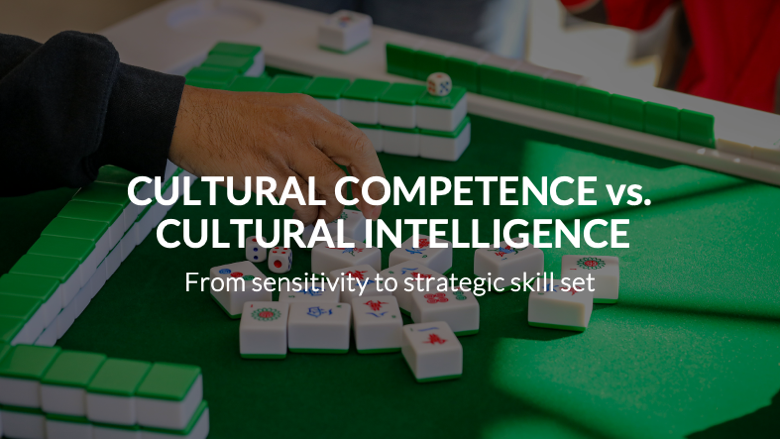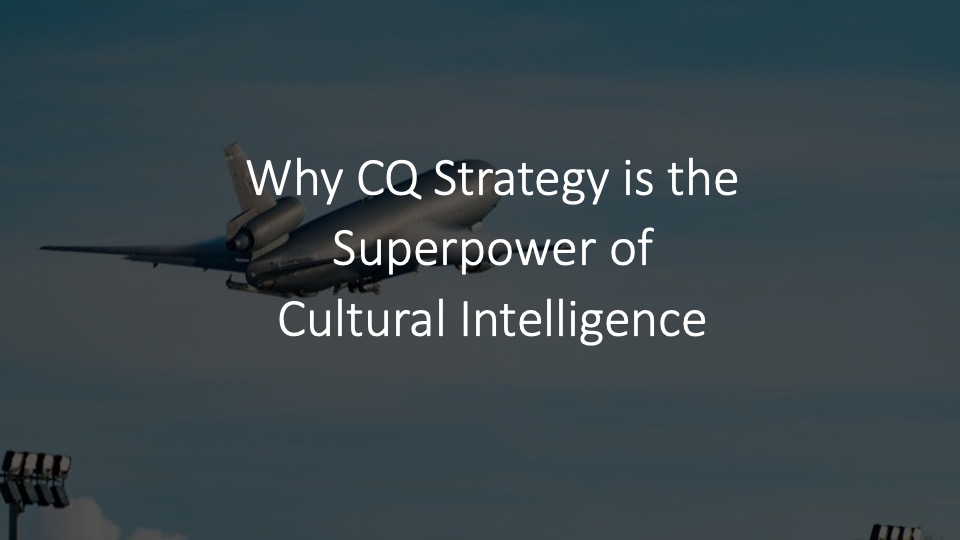Eighty percent of team conflicts can be attributed to unclear goals (Tichy). That’s true across any team but the potential for misalignment goes up exponentially on diverse teams. In fact, most intercultural challenges begin with clashing expectations. What one group views as honest and straightforward, another views as disingenuous and myopic. What an individual from one culture sees as “efficient,” another sees as “shortsighted.” The same can be said about clashing expectations around appropriate ways to express respect, sincerity, responsibility, and more.
Consider how these clashing expectations influence your diverse team:
Who’s in Charge?
Who calls the shots, and where does the responsibility ultimately lie? Clashing expectations around how a leader should lead and what leadership entails is often the first point of confusion. The operating assumption across most Western leadership models is “leaders are made, not born.” Leadership is not inherited by simply putting in your time or receiving a title—you become a leader because you’ve produced results and taken responsibility.
Take Facebook for example, arguably the poster child of Western, Millennial-led corporate culture. Facebook describes itself as anti-hierarchical and title-agnostic. Becoming a manager at Facebook is a lateral move because Zuckerberg wants leaders who are driven by the mission of the company, not power or title.
For most of the world, leadership takes a far more command and control approach. There are clear lines between leaders and followers and the most senior leader in the room should have the final say.
Dr. Becky Heino, one of our certified facilitators at Columbia University, tells the story of being asked by a group of Chinese executives why President Obama wasn’t sitting at the head of the table during a pinnacle moment of his presidency—the capture of Osama Bin Laden.

In a hierarchical culture, the leader should be at the head of the table, even if others have more expertise on the situation at hand. This isn’t necessarily an ego trip on the part of the senior leader. The respect offered a leader sends a message about the values and respect of everyone on the team.
What’s the Purpose of a Meeting?
Or, how about all the time teams spend in meetings, virtual and face-to-face. What’s the purpose of a meeting? Is it to share updates and exchange information, make a decision, develop trust? Even homogeneous teams may have clashing expectations surrounding the purpose of a meeting. But culture socializes us to have some default expectations for why and how to conduct a meeting.
Last week, an African American leader told me his black staff members recently asked him whether an upcoming meeting was a place where they were going to “go there”. He instantly knew what they were asking. Was this a meeting to directly address some underlying conflict on the team, or would it simply be a diplomatic discussion that ignored the friction and just moved forward with the task at hand?
In Japan, a meeting is usually meant to publicly confirm decisions made in smaller groups. The participants explore alternatives privately before the meeting to save face by avoiding conflict publicly.
Meetings in many Mexican organizations are as much meant to build relationships and trust as they are to cover an agenda. Once you trust someone, decision-making is relatively easy and fast.
In most U.S. contexts, a meeting is meant to gather information and input from the participants. Individuals are expected to come prepared to compare and constructively analyze the alternatives.
If you’re participating in a meeting in a Dutch organization, be prepared for the possibility of harsh critique. From the Dutch way of thinking, there’s little need to spend time talking about what’s good. A meeting is meant to identify all the weaknesses and criticisms of a particular approach or plan.
These are generalizations, but the point is—something as simple as “why meet” has a whole set of expectations attached to it, most of which are usually unspoken and quite possibly unconscious.
Who Makes the Decision?
Team conflicts often come to a height in the midst of decision-making. The cultural norms associated with many groups’ decision-making styles are often counter-intuitive.
An outsider may come into the flat, egalitarian culture at Facebook and assume that decision-making will be highly collaborative and consensual. But that’s not the case at all. Decision-making in egalitarian contexts is usually vested in the individual closest to the situation at hand to allow for quick, flexible decisions. In fact, despite an inordinate emphasis on teamwork and collaboration across organizations like Facebook, “consensus” is usually avoided at all costs, lest it lead to “paralysis by analysis”. A team leader in this kind of organization confers with the team before making the decision but then makes the final determination independently, with people knowing not everyone will get their way.
In contrast, the norm for teams in hierarchical cultures is that a lot of people are involved in the decision-making process. One might expect that hierarchical cultures would be places where the senior leader just makes the decision. But that’s not usually the case. Reaching agreement usually takes a long time and involves many individuals; even once the decision is made, it often continues to evolve as new information comes into view.
Other clashing expectations I consistently observe include different assumptions about whether small talk and informal conversation are a waste of time or an important part of building trust. Or, what about the level of details and analysis that are needed? Does presenting a highly detailed analysis demonstrate that you can’t see the big picture, or prove that you’ve done the necessary due diligence to get to the big picture?
Aligning Expectations
Culturally intelligent leadership is so much more than being cultural sensitive or knowing the do’s and don’ts of specific cultures. At the crux of culturally intelligent leadership is aligning team members’ expectations so that the diverse perspectives can be used to develop more innovative solutions.
Here are a few ways to get started:
- Have an explicit discussion about expectations
Any team would be well served by taking time to clarify objectives upfront but this is all the more important on diverse teams. Stating an outcome like, “to reach a decision on which vendor to use” is probably adequate on a homogeneous team but much more deliberation is needed for an outcome like that on a diverse team (e.g. what critieria are being used to reach a decision, how will the decision be made, by whom, how binding is the decision, etc.)
- Test understanding
Check in with each team member to get their understanding of the stated outcome and expectations. Many personalities and face-saving cultures are not going to say, “I don’t get it.” They may even nod that they understand or are in agreement. But you need to ask each individual to paraphrase their understanding of the intended outcome or expectation. Or, ask how they might communicate the outcome to others on their teams—not as a way to put them on the spot, but instead to learn from the different perspectives surrounding the same outcome.
- Debate Expectations
In order to benefit from the diverse insights and expectations on your team, don’t move too quickly to a “shared” expectation. Encourage debate and deliberation about the ideal outcome and the most effective way to get there. Adam Grant, an organizational psychologist at the Wharton School of Business says, “Argue as if you’re right. Listen as if you’re wrong.” I love that. Encourage each team member to confidently share their perspective with conviction. And then promote active listening to each other.
- Practice perspective-taking
A diverse team creates a built-in opportunity for perspective-taking, one of the critical characteristics of culturally intelligent teams. I’ve written previously about how diverse teams can use Jeff Bezos’ practice of using an empty chair at meetings to visually remind the team to take on the perspective of diverse customers or constituents. Use your debate about expectations to help you see how others see this rather than just waiting to defend your position.
- Remember that in stress, people will resort to default expectations.
Stress and time pressure are when we’re most susceptible to unconscious bias and frustration. The reason clashing expectations create so much conflict on a team is because it requires more time and effort to get something done and most teams are already stretched for time. So be particularly on guard for how you and others on a team are functioning under high-stress.
As I reflect on my own life and work, I think clashing expectations are the driving source of conflict in most any relationship—business partnerships, friendship, family, and marriage. Some deliberate conversation, reflection, and effort to address our otherwise unspoken expectations goes a long way toward gaining the benefits that come from working and living with people who see the world differently from how we do.



